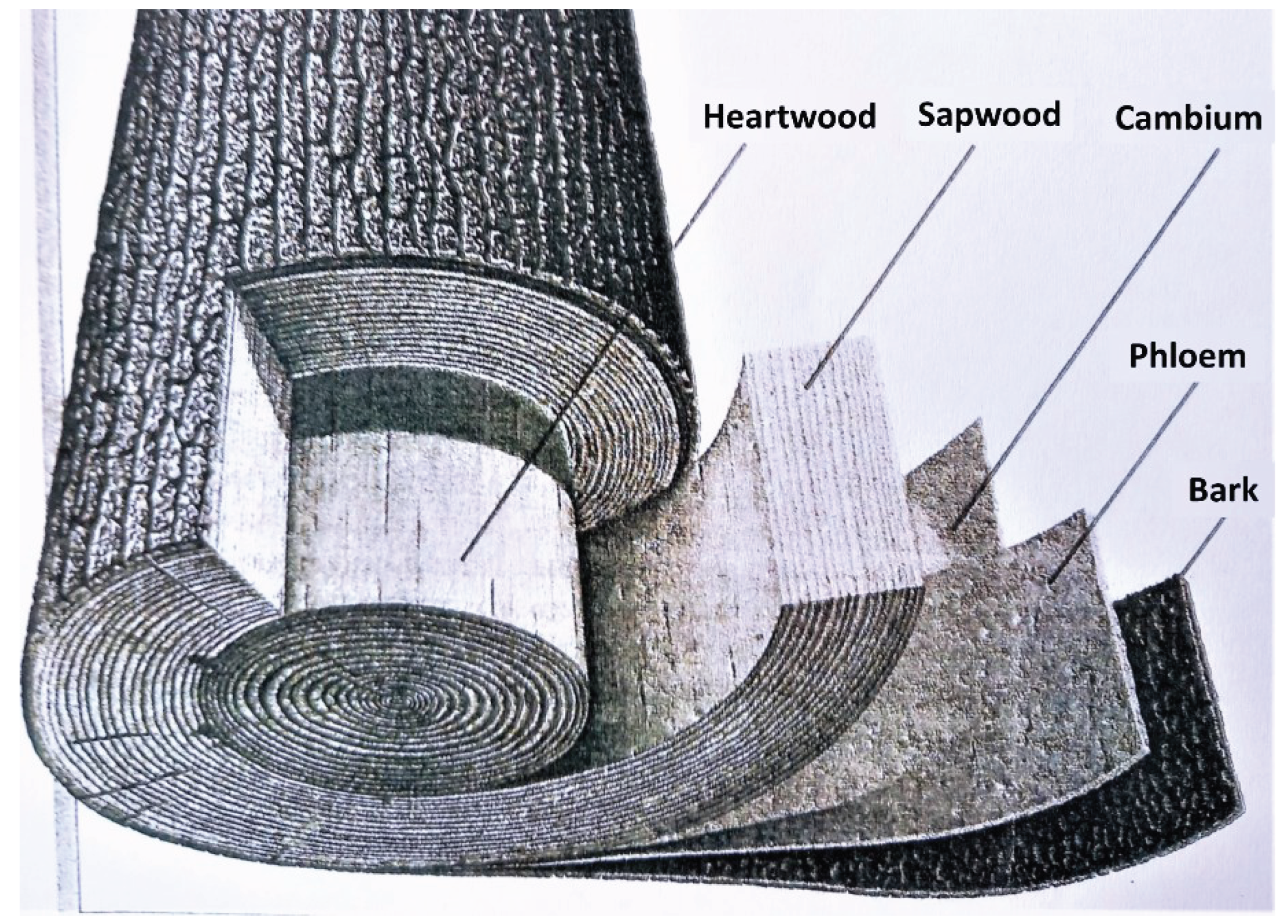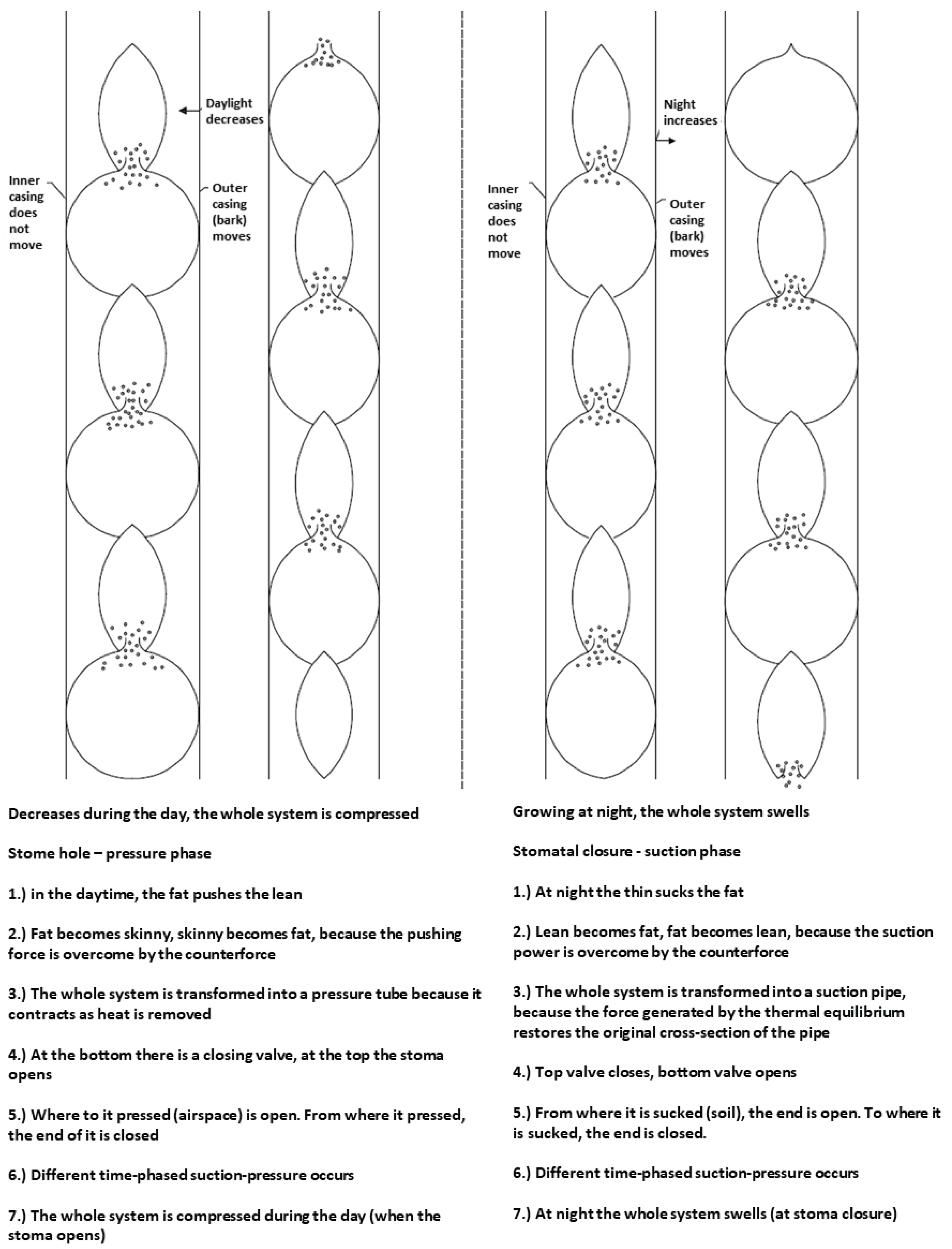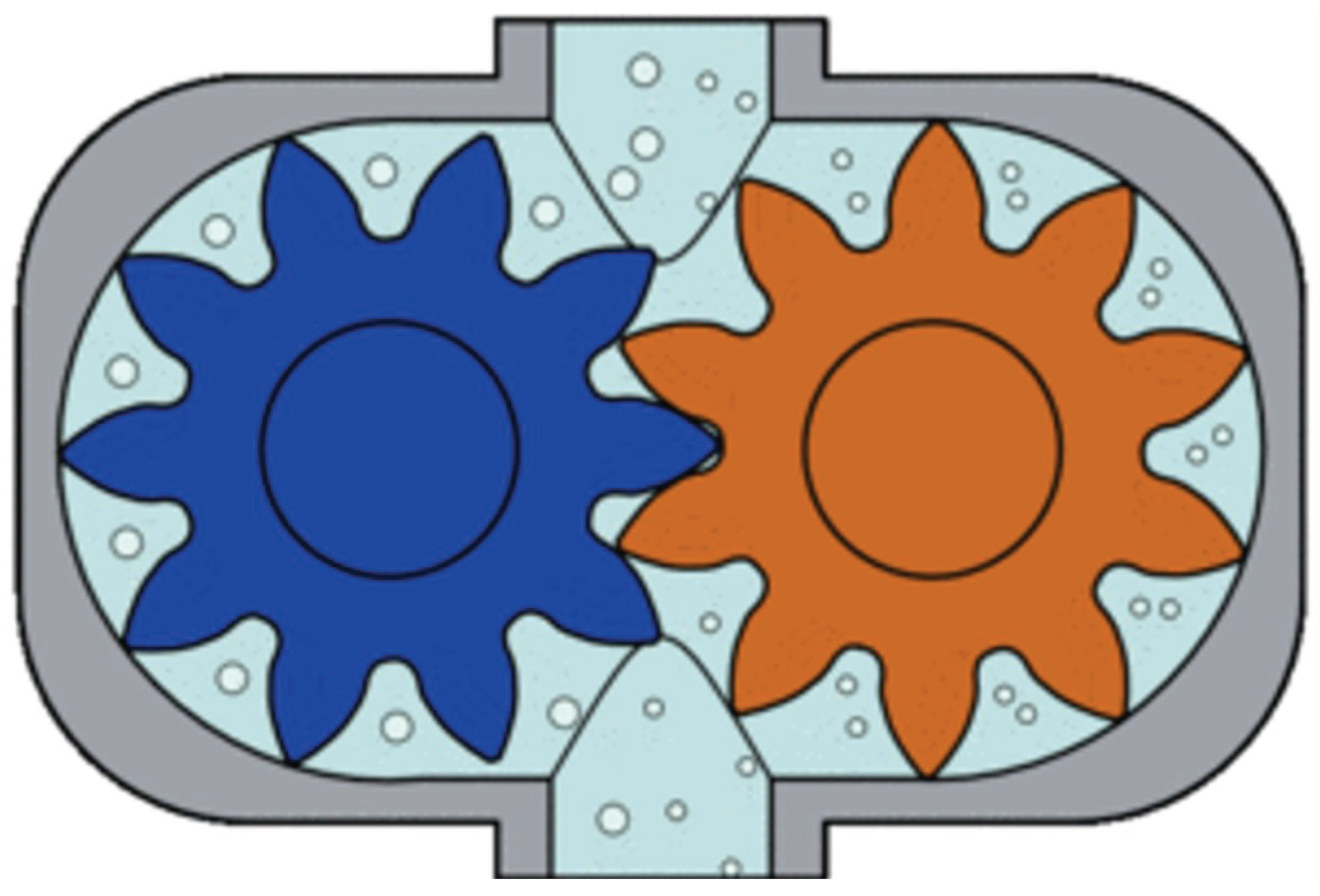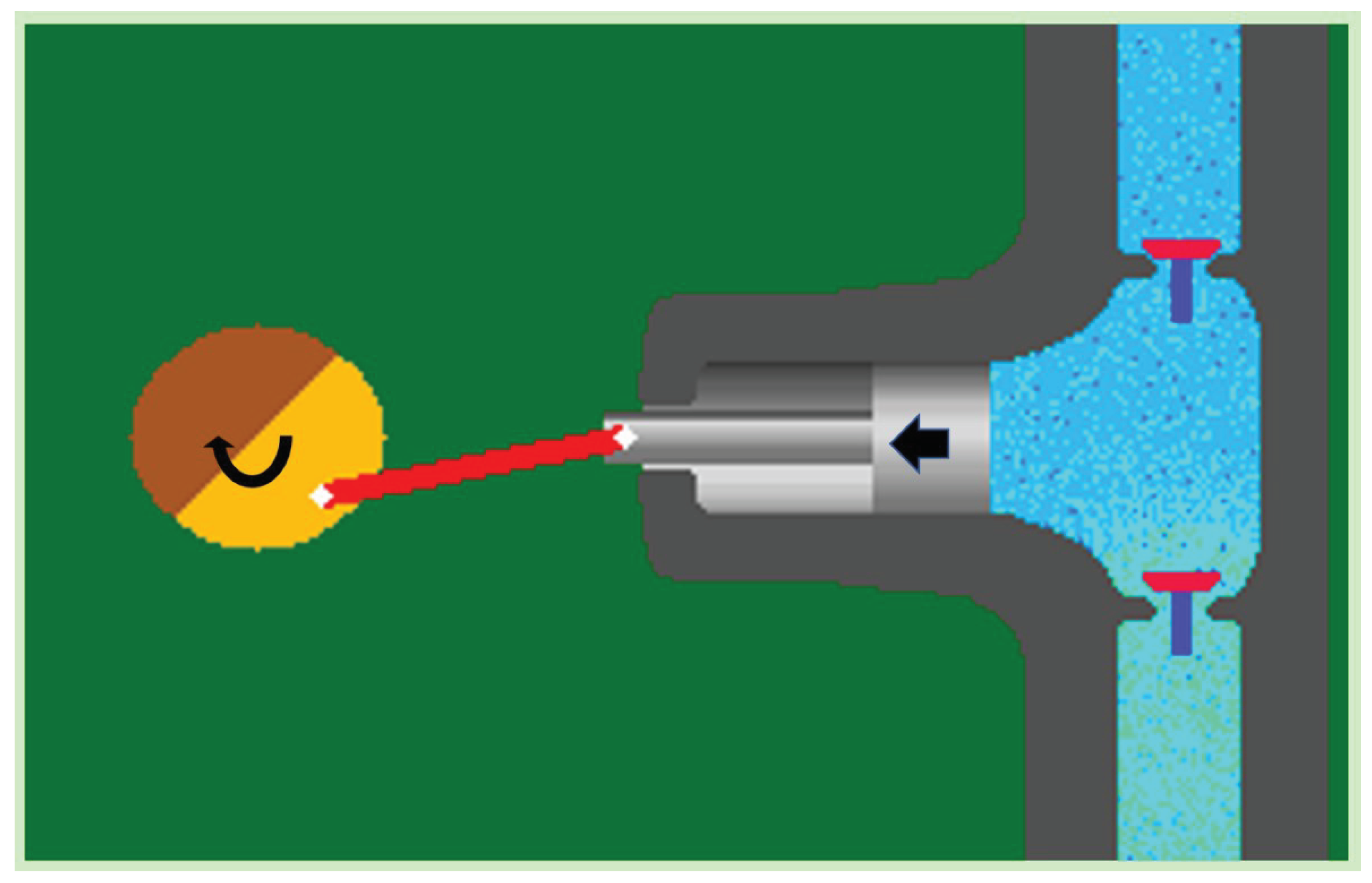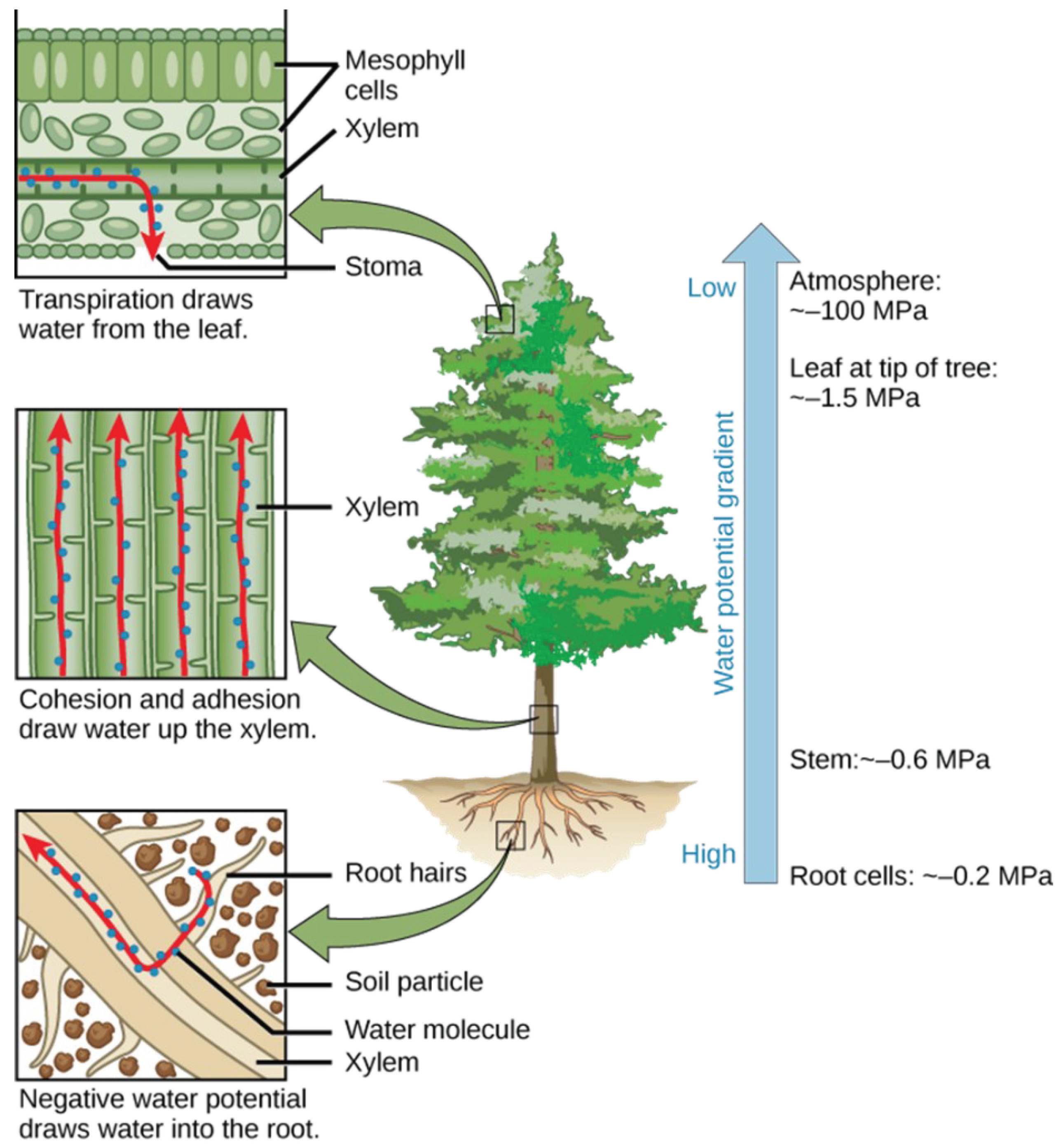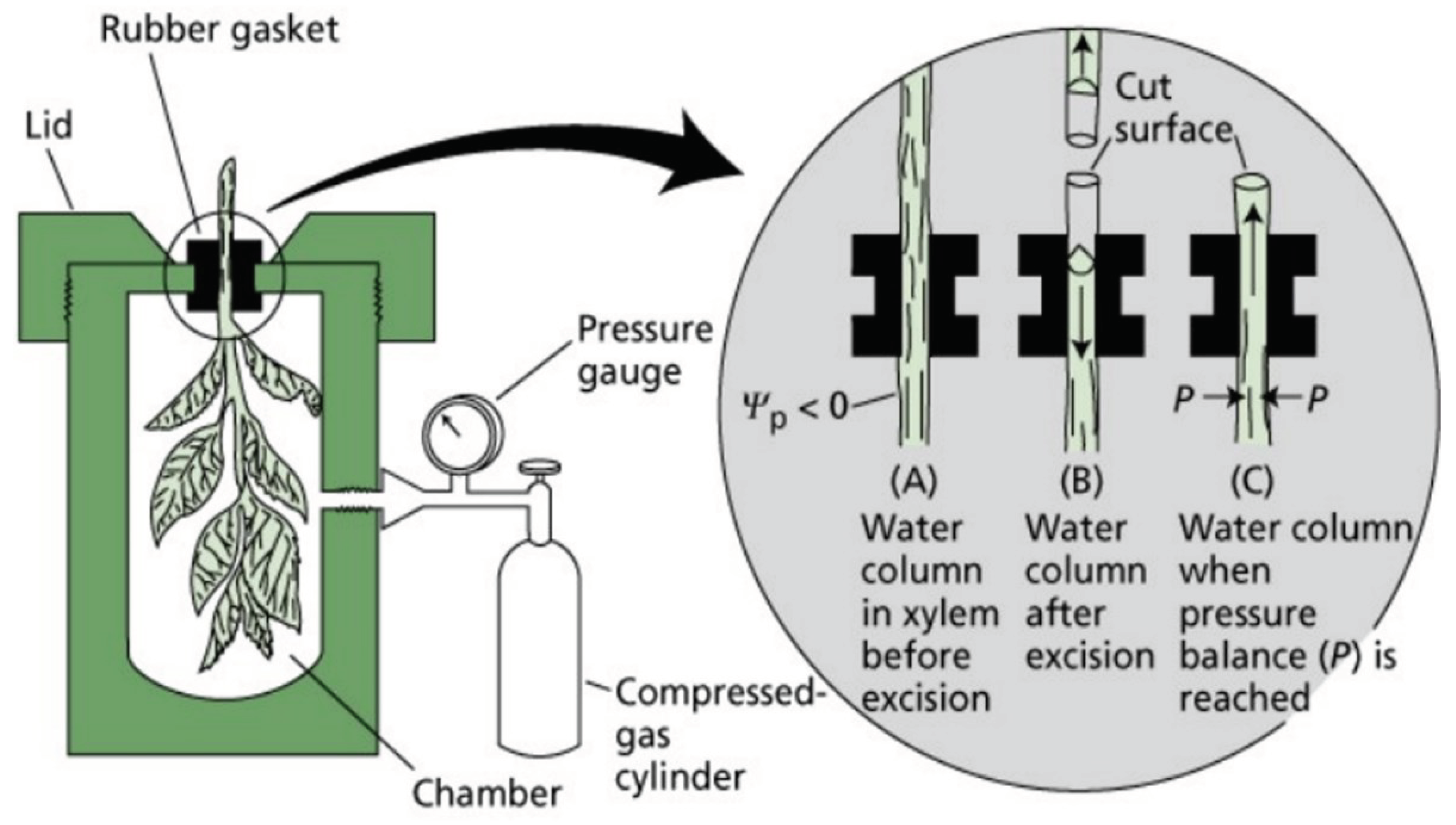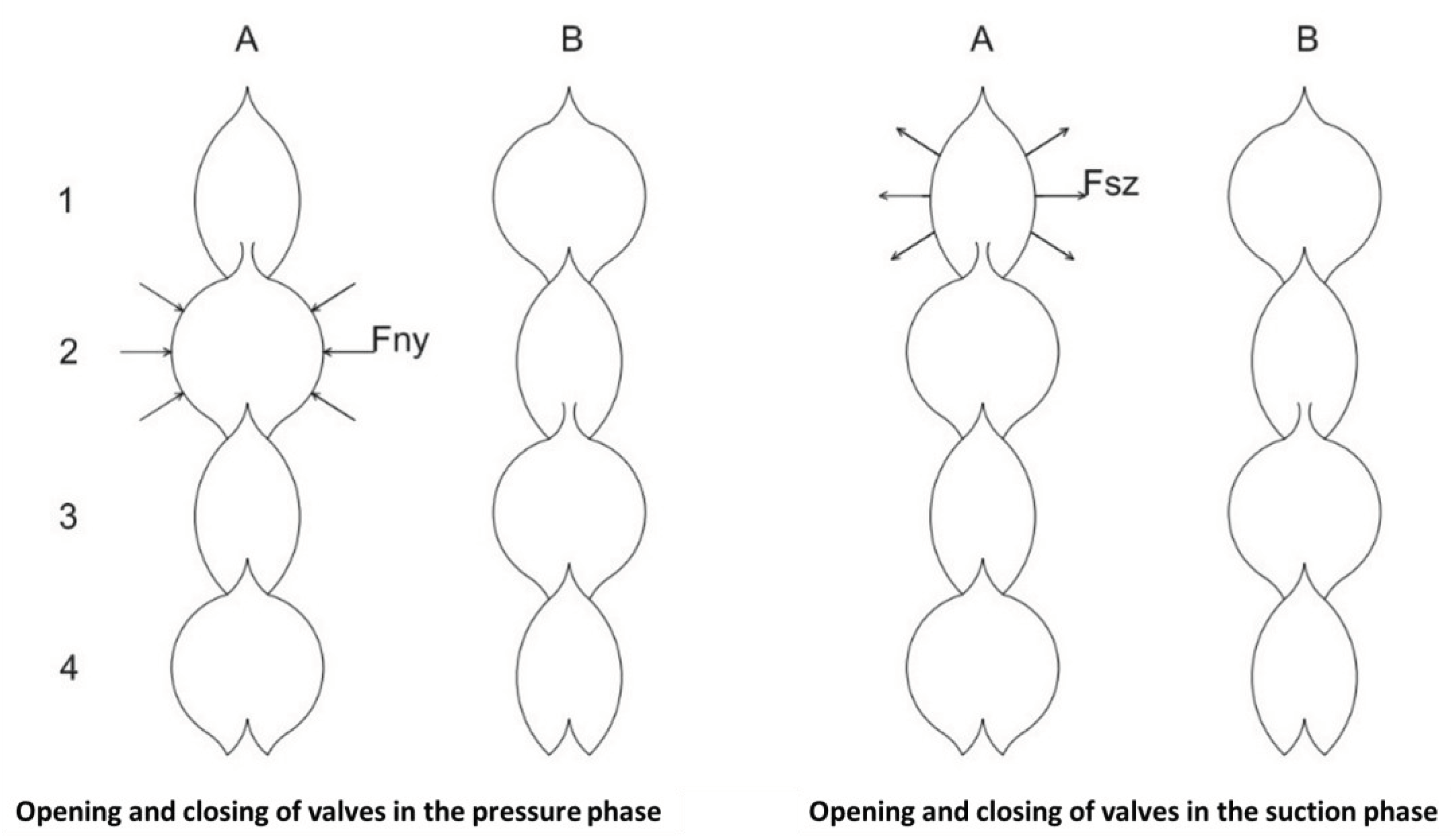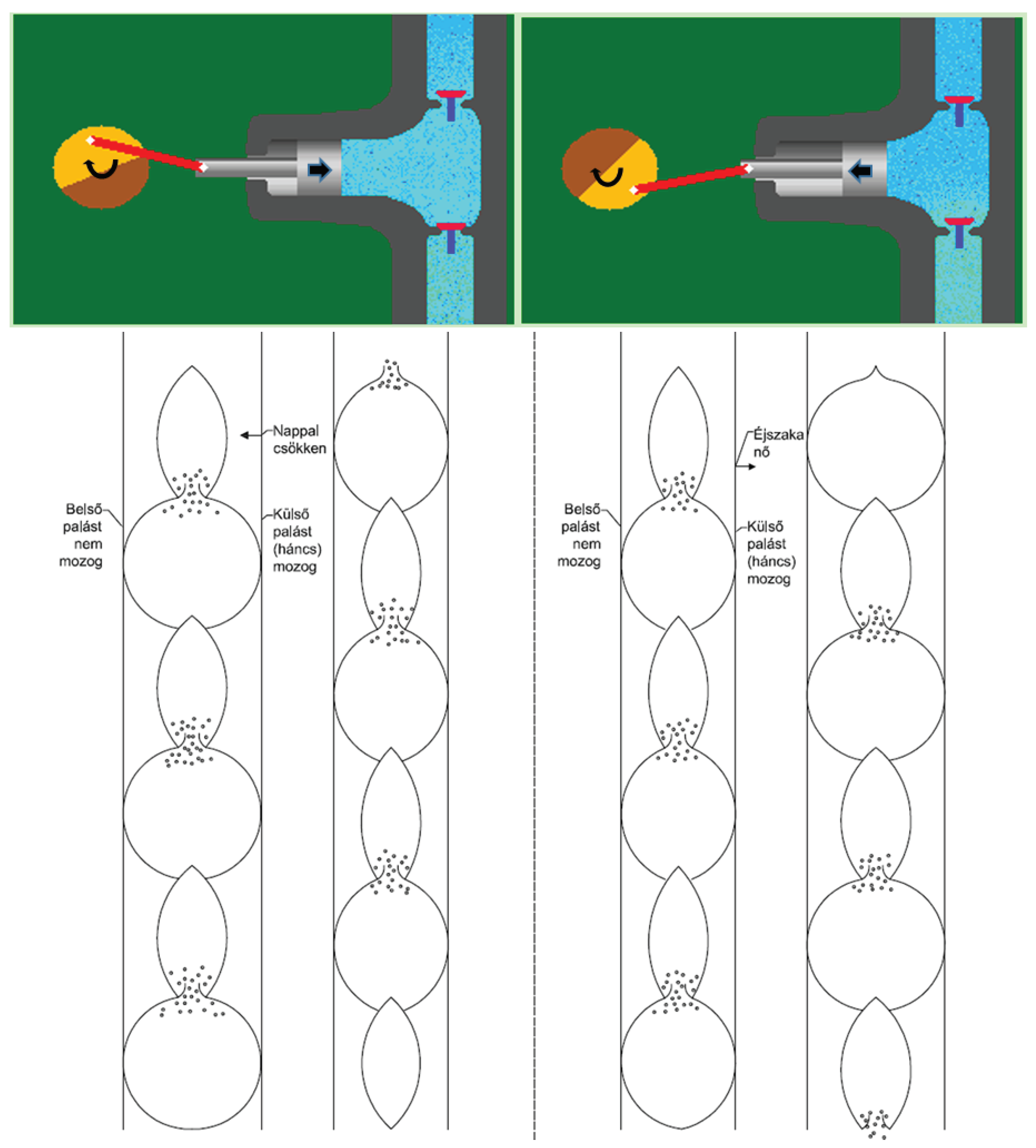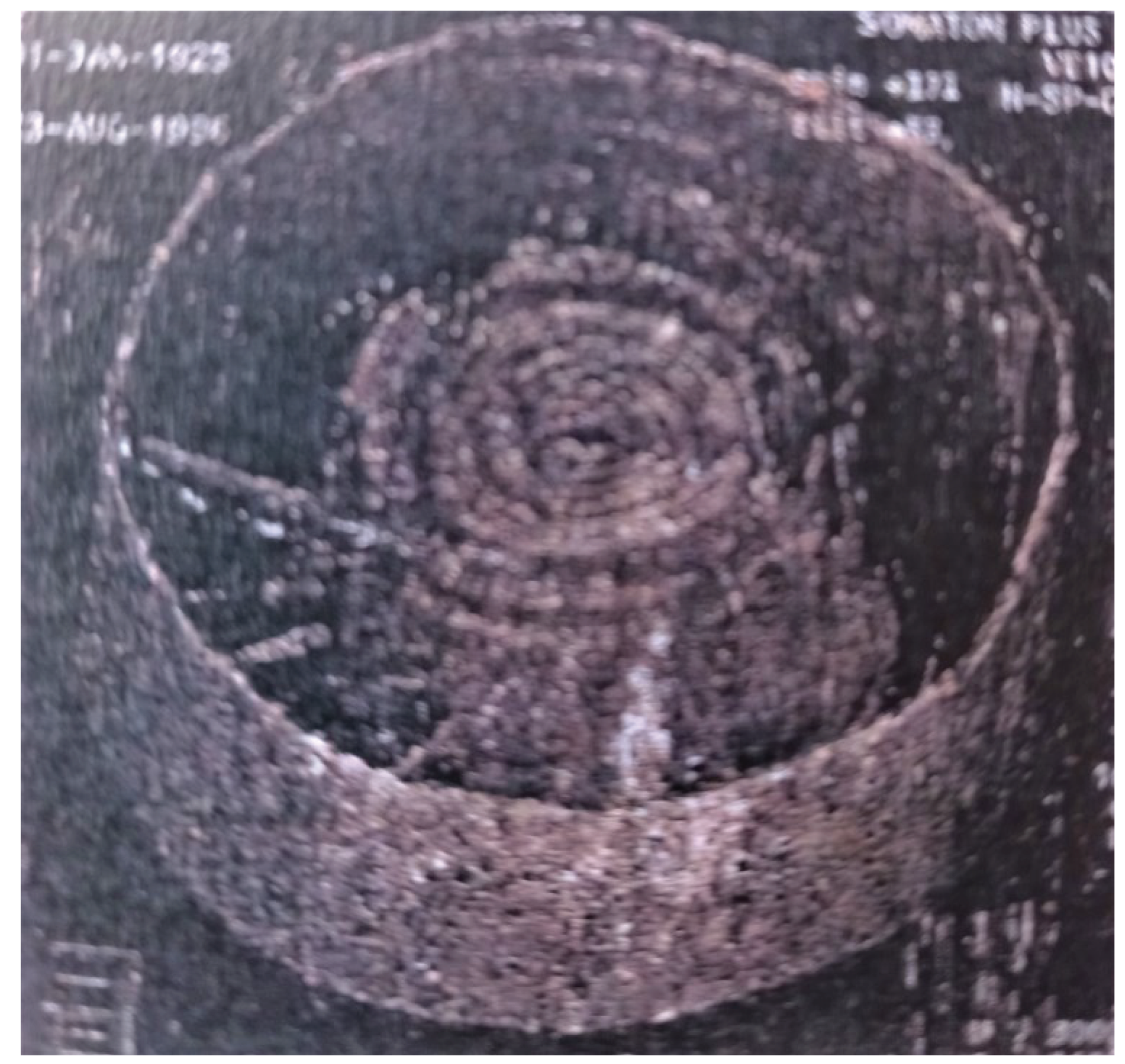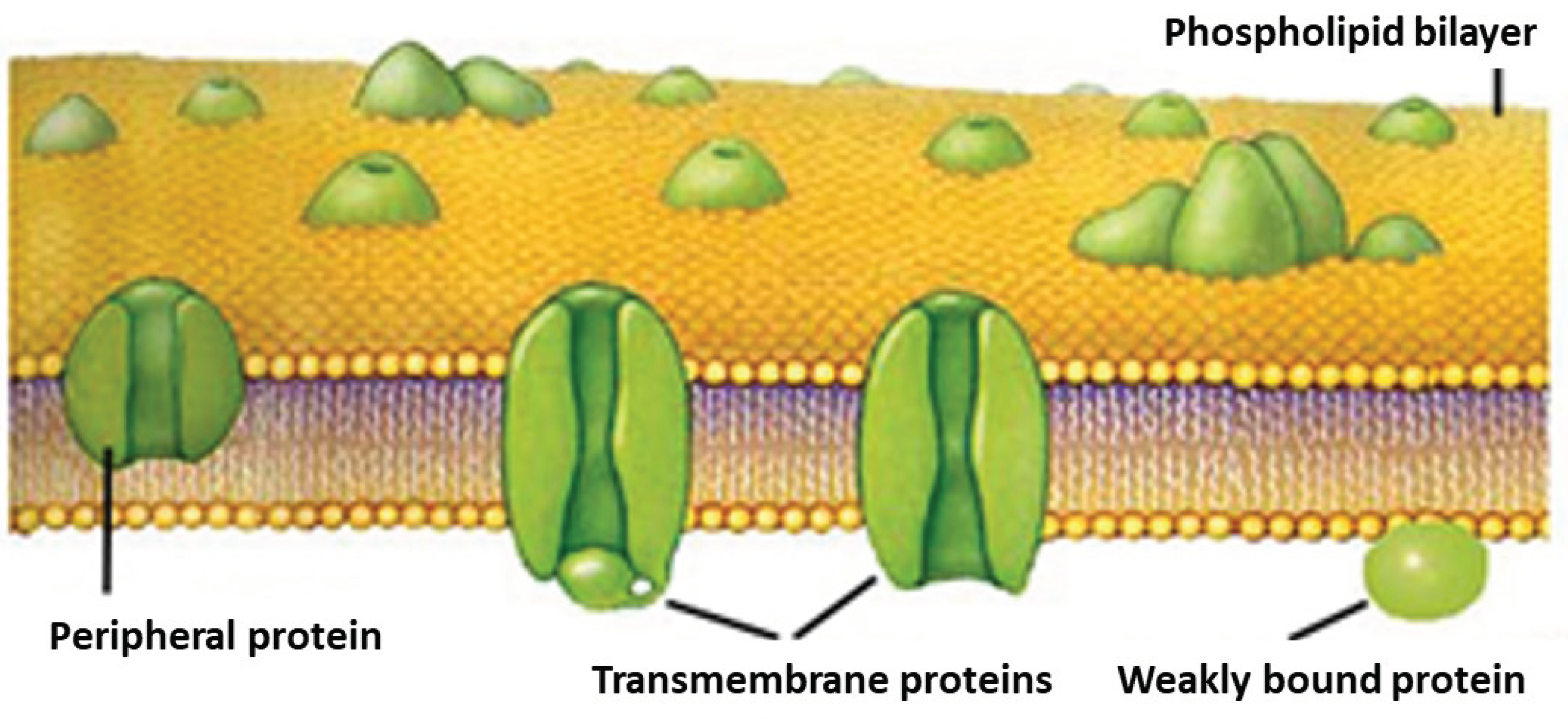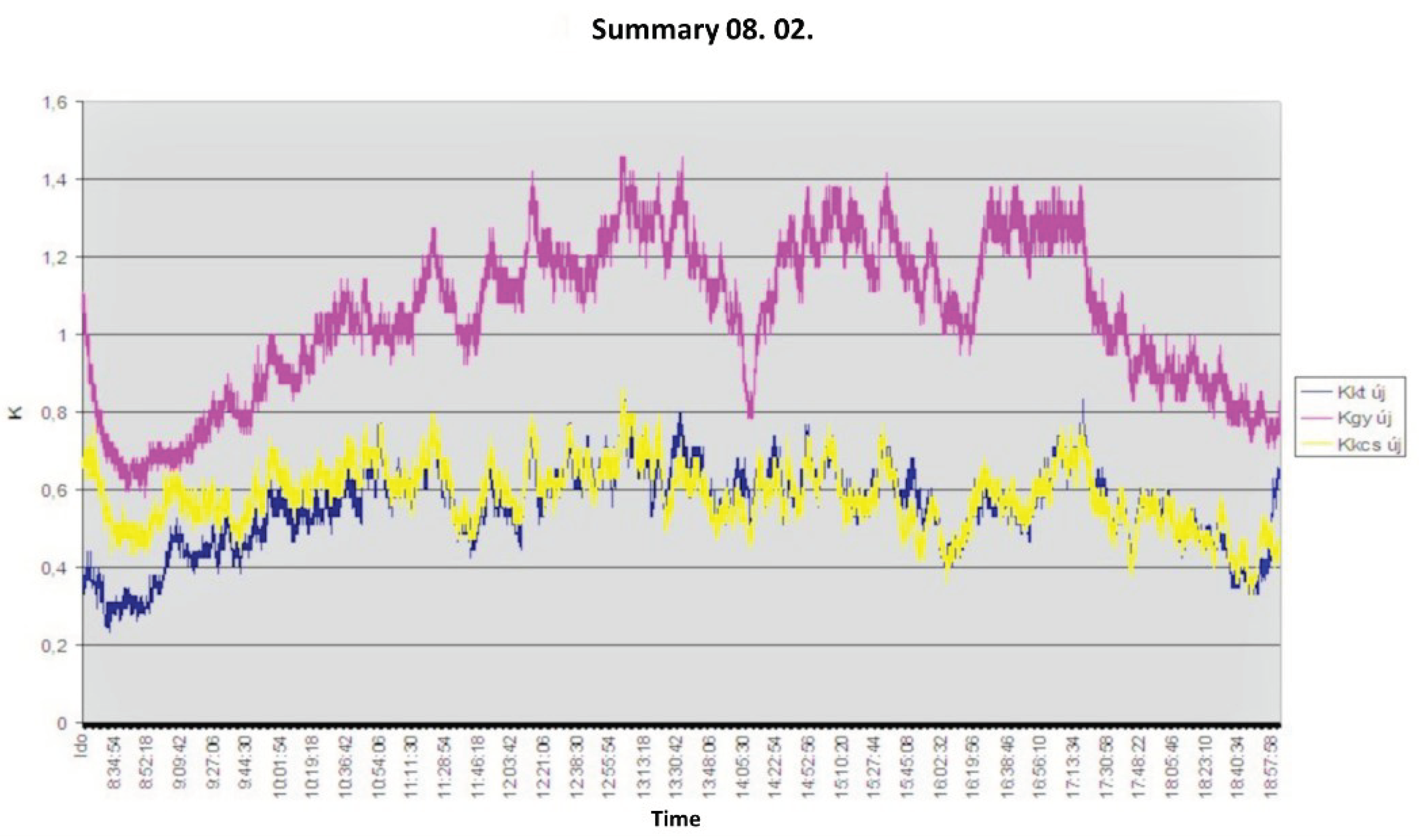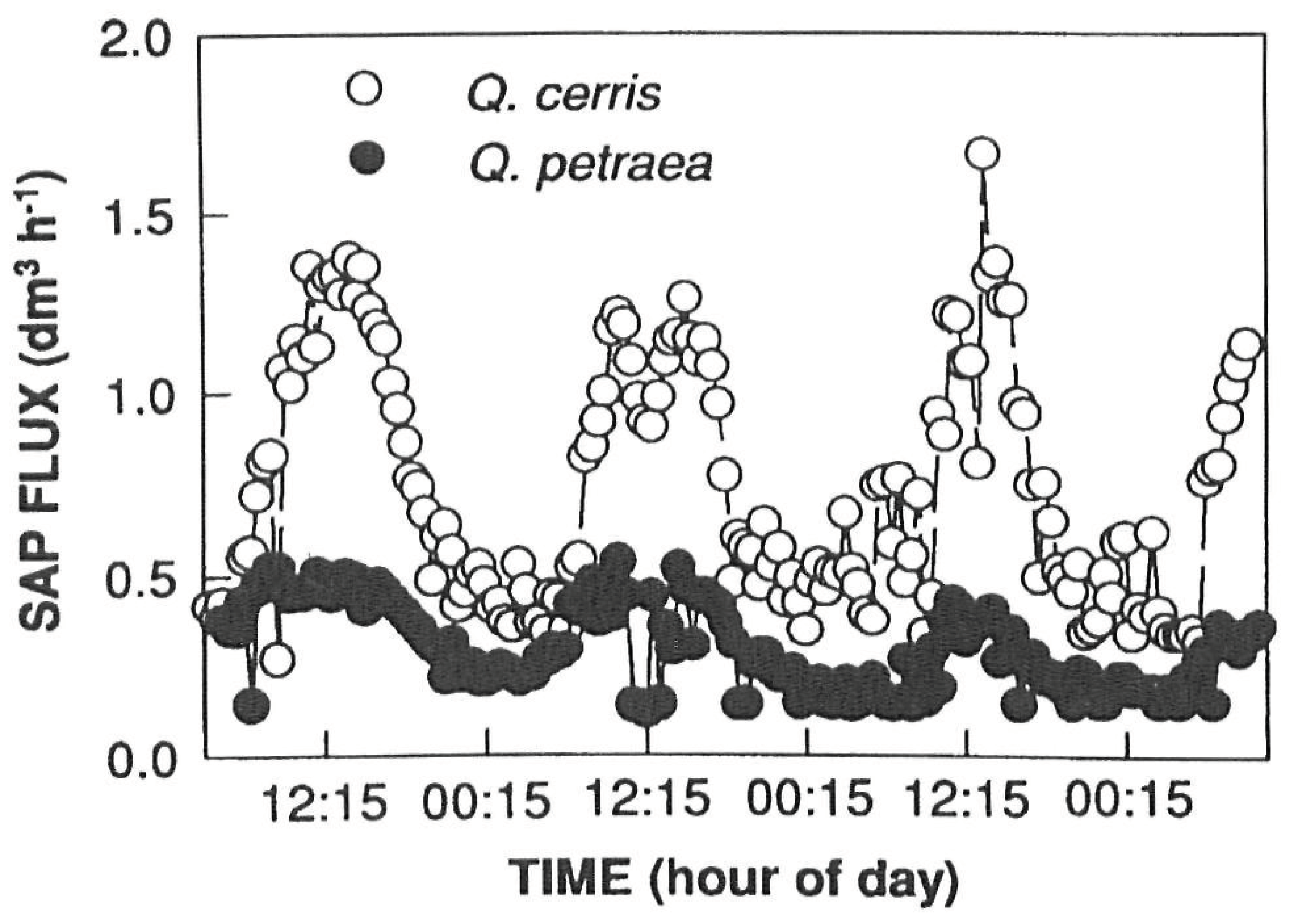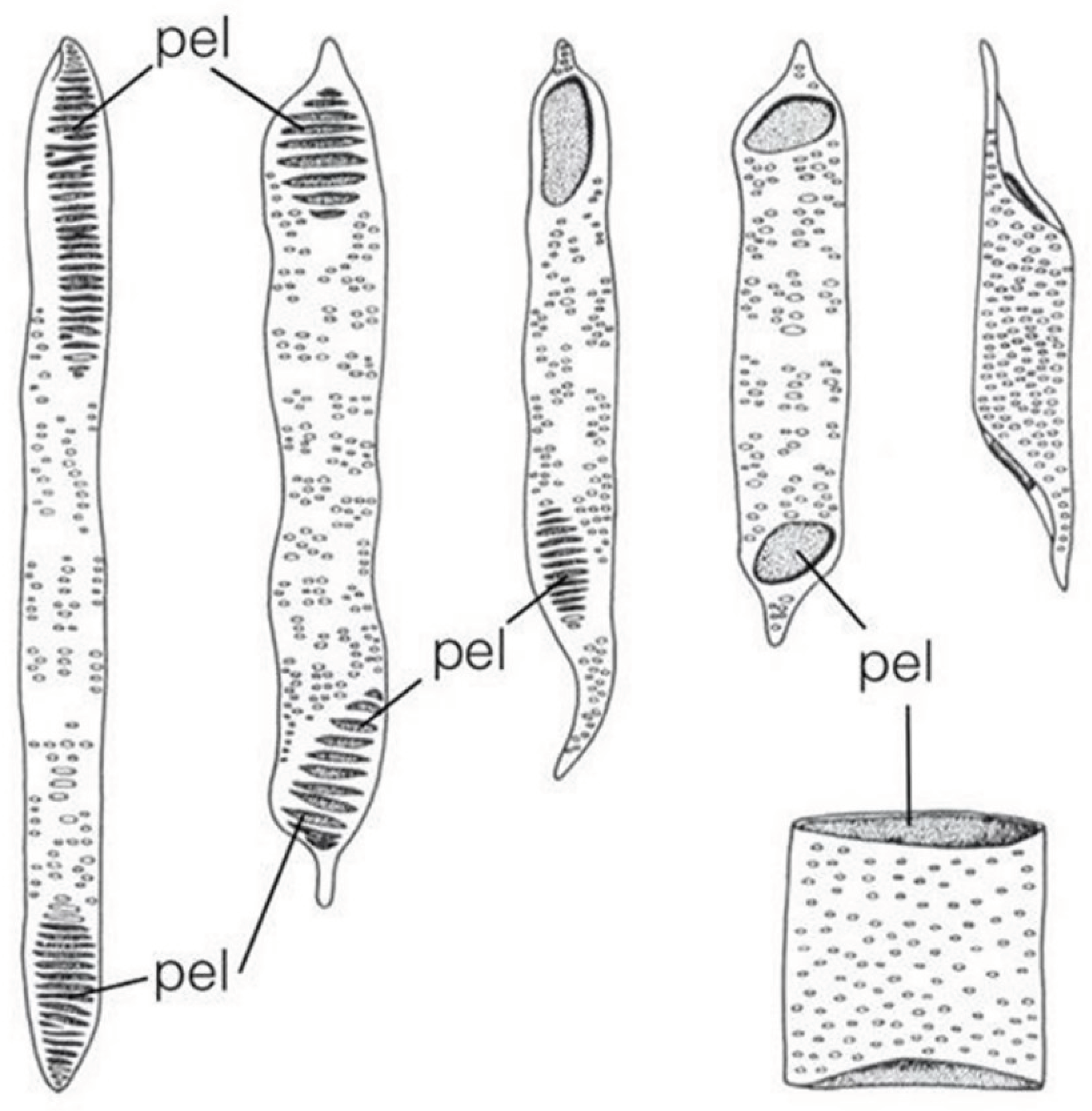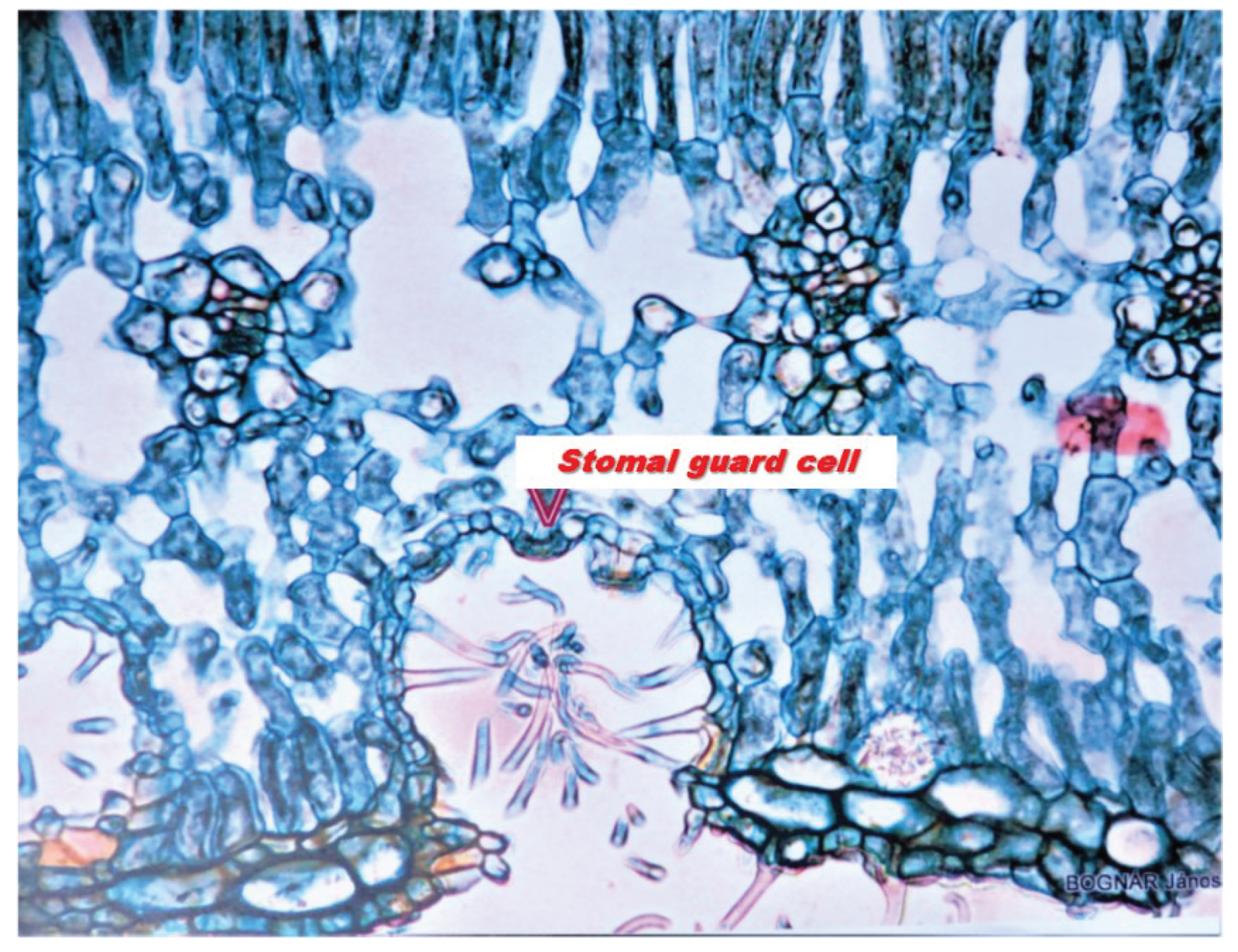The leaf surface has small openings (stomata). These air slits, which are mostly located on the back of the leaf, provide air exchange and evaporation. During evaporation the air slits are open. At higher energy levels, water molecules are released into the air. Consequently, the water remaining in the tube cools down. A heat dissipation phenomenon occurs. Since it is an organic system, the cells, which are located above each other and are connected to each other by their walls, respond by a reduction in cross-section. Of course, only the elastic annual ring formed in the last year can do this (this is certainly the case for the sessile oak). In this case, we are not talking about suction, but about pressure towards the atmosphere. The tubes can only shrink up to a certain limit. Once the contraction is complete, the breathing openings close. Evaporation and heat extraction cease. A thermal equilibration process is triggered, which slowly restores the original cross-section of the tubes. This increase in cross-section, in turn, generates suction forces towards the roots, which draws water from the soil. Similar to a medical eye-dropper, when a compressed cylindrical flexible rubber with a narrowed cross-section is released, the liquid is sucked into the tube. As a pressure gradient develops in the tube (the hydrostatic pressure gradually decreases from the bottom to the top), a variable suction or pressure force is required, and the tube is therefore cut off. Thus, the movement of water can be achieved with a force of nearly equal magnitude, but also with a smaller force depending on the number of cells that are cut off. This disconnection results in a peristaltic movement. Another important aspect of peristaltic motion is that this form of motion ensures that the system, actuated by a lateral force, can move along a constant path. Therefore, permanent work is also possible.
An explanatory note below the picture text now summarizes the movement events, complete with the visual image.
3.1. How the Water Pump Works?
A peristaltically pulsating suction-pressure system is important, the similarly operating water pumps principle of operation of the same function. Rajkovits Zsuzsanna, a physicist, describes the sinking and rising of a snail octopus, which J. Verne's imaginary submarine the Nautilus. (J. Verne's imaginary Nautilus was known as the scientific name of the snail octopus [
5].) The basic law of the bionics principle, similar systems work in the same way, one assumes the functional similarity between pumps and water pipes. As it have already mentioned, two types of pumps are known [
6,
7]. One is the same time-phase suction-pressure pump. Such as the ordinary well pump or the gear pump (
Figure 2). These pumps are characterized by the continuous flow of water through the inlet and outlet openings, and both ends of the pump are open. In such pumps, the water flow is ensured by a rotating mechanism between the inlet and outlet, which divides the system into two parts. Between the inlet and one-half of the rotating mechanism is the suction, and between the other half and the outlet is the discharge. The other type of pump is where the suction and discharge are not in the same time phase. Examples include the commonly known suction-pressure well, or the less well-known piston pump, which is operated by a lateral force similar to a water delivery pipe(
Figure 3). These pumps are characterized by the fact that they draw water into a tank. In this case, the valve between the tank and the suction pipe opens, but the valve between the tank and the air space remains closed. The next step is to squeeze out the water sucked into the tank. The valve opens at the suction is then closed, but the valve between the air space and the tank is opened. The result of this process is that the end from which I suck is open, and the end to which I suck/tank/tank is closed. This is the suction phase with the suctioned water section. And in pressure, where I push, the end is open, where I push/tank/ from, the end is closed. The conventional theory is that during evaporation, the flow between the inlet (root) and the outlet (breather) is continuous and both ends of the pipe are open. This is almost reminiscent of the operating principle of a pump with the same time phase. But where is the rotating mechanism that produces a suction at the bottom and a pressure above? As far as I know, there is no such thing in the plant. Then the plant still sucks water into a tank by closing and opening valves in a similar way to the differential pumps.
Figure 7.
A pulsating system.
Figure 7.
A pulsating system.
Figure 8 illustrates the movement of water during the pressure and suction stages. In the pressure stage, both the piston pump and the water delivery pipe have the upper valve open and the lower valve closed. In both cases, the water volume of the tank is reduced. In the suction stage, the situation is reversed. Here both the organic water pipe and the piston pump draw water. Therefore, the lower valves are open but the upper valves are closed. In both systems, the tank water volume increases. As shown in the diagram, the operation of the water hose and the piston pump requires power, a variable volume tank, valve, and mechanism. The latter ensures that the force can move on its way. Force in an organic system is provided by the presence or absence of evaporation. In the case of a piston pump, this is provided by the power source rotating the wheel, (manually or mechanically), to which an eccentrically mounted crankshaft is connected. The mechanism is provided by the pulsating motion of the organic water pipe and the piston motion of the piston pump.
Where are the tanks and where are the valves?
The question is raised for the organic system because it is obvious for the piston pump. One tank is the volume difference due to the expansion and contraction of the water transport system. I can prove this with an instrument I have developed and also visualize the movement of the water. The principle of construction and operation of the instrument is as follows: a tight-fitting rubber tube is inserted into a bicycle tube filled with water, and a capillary tube is inserted into a hole drilled in the rubber tube. This structure is clamped to the tree by means of four screw spindles and two Plexiglas plates so that the two flexible systems (the tree and the water-filled bicycle stick with the capillary tube) are placed between the two rigid Plexiglas plates. I then place the water nozzle in the middle of the capillary tube using the wing nuts on the screw spindles, taking care to keep the two plex sheets parallel. This allowed me to follow the bidirectional movement. The pitch of the screw spindle is one millimeter. The displacements in the capillary tube were linear during calibration. At 90 degrees of rotation of the wing nuts, the dragonfly pitch changed four centimeters, at 180 degrees eight centimeters, at 270 degrees twelve centimeters, and at a full 360 degrees of rotation 16 centimeters. Thus, for a one mm change in plant size, the vertical increase in the water level was 16 cm. The instrument converted the horizontal movement of the tree from an actual change in diameter to a vertical movement. In the case of thick bark trees, the changes in tree diameter presumably do not follow the changes in the diameter of the water pipe because their movement is absorbed by the elastic strap. My measurements showed that during the night suction phase, the tree diameter increased and the water intake crept up the capillary tube. During daytime evaporation, the displacement was in the opposite direction. It should be noted that the length of the day in plants is from the opening of the air gap to the air partition. Often in the early afternoon on hot summer days, the plant closes its respiratory aperture. It switches to night mode. I have also experienced this because I have had the water intake move in the opposite direction at noon, so the diameter of the tree has increased because it has been sucking water. The early afternoon air gap closure is well known among plant life scientists. I will discuss later that suction is a slower, energy-saving process. Hence, frequent daytime aeration is an important factor in plant water management. However, there is another reservoir in the tree, the existence and location of which have been detected by a research team organized by Csilla Béres in the Flatwoods project, using a portable computer tomography (CT) and a high-resolution magnetic resonance imaging (MRI) scanner (
Figure 9)
The image shows a three-dimensional CT image of the trunk of a sessileoak. The figure is very informative because it tells us that the pulsation system is forming water reservoirs inside the trunk by means of channels. The image shows a very narrow circular ring that is permanently connected to the canals and the water reservoirs. The article by Csilla Béres also shows that the plant can use water from the water reservoir, the stored water, and return it to the active pulsating phase. It follows that there is water movement inside the tree even in the already dead part. The movement is presumably controlled by the pulsation system. The experiment also involved placing isotopes in the tree and using scintillation detectors at different heights to follow the isotope path. They found that the flow was not uniform. In addition to the fast flow, there was a much slower flow, and this persisted throughout the night. At night the air vents are closed. Csilla Béres also noted that the pull of evaporation cannot explain this phenomenon. It is also interesting to note that the rapid flow in the tracheae formed in the very narrow outer band of the tree in the last year of in the last year of the tree. They called this free water, and the water in the canals and water reservoirs bound water, either to a material or a structural element [
8]. Given the fact that the deposition and extraction do not occur at the same height, we can conclude that water flow against gravity can also occur in the already dead wood. The mechanism of storage and evaporation is completely unknown in the world of physiology. At the end of the last millennium, water transport experiments on Sikfőkút were a milestone in physiological research, involving several famous institutions and universities were involved [
9]. Without being exhaustive ATOMKI Budapest, Hungary, DOTE Debrecen, Hungary, University of Marburg, IATA Florence, University of Forestry and Woodworking Sopron, Hungary. The research in Síkfőkút has been reported in several articles by the institutions listed [
8,
10,
11,
12]. Another important question is where the valves are. The valves are located on the surface connecting the ridge walls of young one-year-old cells. Their existence has long been known (called transmembrane protein), only their function was unknown. Aquaporin, the membrane water channel, was discovered in 2003 by Peter Agre and Roderick MacKinnon. (They were awarded the Nobel Prize in 2003.) This transmembrane protein molecule allows valve closure, and valve opening [
13]. It also has the last link in the chain, the valve, without which the pulsating system would not work (
Figure 10).
3.3. Evidence for the Water Transport Theory
1.) The plane-root isotope experiments have clearly shown that the conventional theory is wrong. In his summary paper, János Attila Tóth mentions that the transport of water by trees has been shed in a completely new light. In particular, his findings were decisive, as I have already described. Upward flow was also observed at night, which is impossible for closed breathing holes. However, some writers explain the night flow by root pressure. This is not correct, because a poplar's stake shoots out even if it has not yet formed roots. Roots are formed only after the shoot has been established. I will explain the physiological reasons for this later.
2.)
Figure 11 shows time-dependent velocity patterns in the trunks of different tree species on a day after watering. On the vertical axis, K= 0.206 U
0.814, where U is the flow velocity/m/min [
10,
11,
14]. In the figure, the sawtooth shape at the bottom may indicate when water in the still organic xylem tube of the annual ring formed in the last year flows through valves from one cell to the cell above. The pattern in the image reflects the flow of water from cell to cell. As it is a flow in an elastic system, there is no uniform motion. The opening and closing of the cell valves involves the storage and recovery of kinetic energy. In the early afternoon, the flow is decreasing. This could mean, as I have described earlier, that the plant has started to take up water and store it in the woody debris. This is when I noticed a change in the direction of the water intake of my instrument, i.e. the tubes were swollen. There was no condensation in the nylon bag on the branch. That the plant could have done this could be explained by the fact that the xylem tubes had already used up a lot of water and could move it in another direction. This phenomenon is particularly important in thin-corted tree species such as beech. If there is enough water in the soil, the tree does not shed its bark in the open, because it switches to night mode, even several times a day. Moisture circulation does not stop and cooling is achieved by suction from the roots. If there is not enough water in the soil, it will immediately drop its bark in the open. This is the phenomenon of pieling.
3.) The law of continuity in itself proves the theory correct, although
Figure 11 shows the image of a function of a half-sine curve. I thought that the nocturnal part of it could be found somewhere. Csilla Béres showed it on her computer before her death in Szombathely in the early 2010s [
15]. The other half of the sine curve was also plotted. This was important for me because it gave me the right to invoke the law of continuity. The average speed is higher during the day and lower at night. According to the law of continuity, a high speed has a small cross-section and a low speed has a large cross-section. (This can of course be distorted by the amount of inward and outward movement.) So the tree's casing is moving. Further mobile computer tomography (MCT) measurements by Csilla Béres and the research team mentioned above confirm beyond any doubt that the rate of tree sap flow shows a regular periodic diurnal oscillation and that a 24-hour periodic sinusoidal curve can be perfectly fitted to this rate variation [
10] (
Figure 12).
4.) One of the most mysterious secrets of tree life: how does life start in spring, how does a dormant shoot in a bud turn into a leafy shoot? Let's not forget that, at this stage, there is neither evaporation nor photosynthesis. In my opinion, in autumn the leaves fall off the tree so that the pressure remains in the flexible transport system. This is easy to see, as water is constantly flowing upwards at suction and pressure. At the end of the winter, some of the living elements are absorbed in the tubes, and thus the water is released from the pressure tube and combines with the sugary compounds next to it. This pressure and excess compound is a prerequisite for life to restart. The diameter of the fold is then reduced. This phenomenon, that one is suspected, was pointed out by my forest engineer colleague Gergely Levente Kökény. His article can be read in the March 2022 issue of Forestry Journal. The article is titled Tree Moisture Cycle, Twitter, and YouTube [
16].
5.) The term root pressure is often mentioned in the literature as an important factor in water transport. In my opinion, there is no root pressure. As I described earlier, a one-and-a-half meter long stake can sprout without roots, but only if the last living annual ring is full of life. A prerequisite for the onset of life is the partial death of the last living growth ring, which results in a reduction in the cross-section of the plant. Of course, all xylem elements cannot die at the same time, because then the growth of the plant is not guaranteed. The floodplain foresters store the summer and the willow in a cool, humid place and plant them immediately after delivery. It is true, however, that the delivery system has a variable pressure rhythm. This pressure is highest in the morning and lowest in the evening. There is also an annual rhythm. It is highest in the winter, during the dormant season, when the tree is saturated with water. This is when the shrubs are submerged in water. The inner water reservoirs of the tree are almost saturated. I did an experiment on this in the birch tree in front of my house. In winter, before the buds had set, I cut off a ten-centimeter thick branch and smeared it with a liquid, gel-like wound resin. Water dripped down the cross-section of the bush when it budded, but there were also areas where the wound resin bulged out. An air bubble formed and later burst. This phenomenon also proves that the wood has a large water reserve in winter and that the wood body is under pressure. This daily and yearly pressure rhythm of the transport system therefore applies not only to the root but to the whole transport system. The rootless shoot emergence and the spring initiation of life in the stake can be traced back to the same analogous phenomenon. In some of the tubes, the living elements are absorbed, causing the water to escape from the pressurized tube and merge with the sugar solution next to it. The diameter of the stem is then reduced since the excess material is realized in the leaf shoot. When the branch is cut off, the excess compound flows out of the wood. This phenomenon is observed in walnuts and birch. The phenomenon of guttation is also due to the pressure of the transport system. This is when plant fluid is forced out through the hydatodes on the leaf plate. It is no coincidence that this phenomenon occurs late at night in closed breathing openings when the pressure of the transport system is high. It is particularly common in the tropics, where high humidity is common in crow flies. So it's not root pressure either.
In
Figure 13, only the dead water transport cells of various shapes are visible. The negatives of the dead protein molecules across the membranes are clearly visible. There is no need for organic transport tissues inside the tree, but solidification is needed. It is particularly important to achieve high bending strength.
6.) A team of Hungarian, Finnish, and Austrian researchers has used an infrared laser scanner to investigate what happens to tree canopies when night falls. The scientists concluded that the trees were asleep. they used a laser scanner to create a highly accurate and detailed model of the trees they studied, which they repeated every hour during the night. It was confirmed that the branches and leaves of the trees were dropping by up to ten centimeters at night. According to András Zlinszky, a biologist at the Hungarian Academy of Sciences, they reached their lowest position just before sunrise and then returned to their previous position within a few hours at dawn. It is not yet known whether the trees were woken up by the sun or by their own internal rhythm independent of the sun (Eetu Puttonen) [
17]. The research team measured the shift in old birch trees The scientific name of the birch is Betula pendula. The name is derived from the Latin word pendere, which means drooping. The branches of the old birch tree hang long. I think that nothing proves the theory more clearly than the sleep movement of trees. At night, as the branches are sucked up from the root, the drooping branches become heavier and heavier from the water flowing into the transport system and into the water tanks, so they keep dropping down [
18]. During the day, when the pressure starts to build up, the process is reversed. The reason for the rapid rise is the difference between the daytime and night-time power play. Later, András Zlinszky and his research colleague repeated the experiment with exotic tree species of a few meters in height and a few centimeters in diameter. The measurements were carried out in a semi-enclosed greenhouse in Balatonfüred. They found that, unlike birch trees, these trees move their foliage up and down [
19]. This movement may be related to the water saturation of the trees, as they correctly guessed. Csilla Béres' MRI experiment shows that the tree stores water in different places through channels during the night. This causes a continuous change in the bending moment in the cross-section of the tree, causing the branches to move up and down. This has been called the pulse of the tree. That's why it was deduced that not all trees are asleep, but they all have a pulse. I met András Zlinszky several times, so he knew my theory and referred to me as the author who described the flow of water in a tree with different time phases of suction and pressure.
7.) Why do the trees make music? Reading books on plant biology and notes, I have come to the conclusion that there is no plausible explanation for the air exchange in trees. I found an interesting engraving of a succulent plant leaf in János Bognár's plantarium [
20].
In the section, the valves were distinctly outlined on the stomatal crypt vault, connected to the spongy parenchyma cells, the double vessel ray, and the columnar parenchyma (
Figure 14). The double vessel ray pulsates. As the leaf vessels become thinner, the amplitude of the oscillation decreases, but the frequency increases. The vibration is transmitted through the spongy parenchyma to the vault of the crypt, which it vibrates. This causes air to flow in and out of the valves. . This vibration, caused by the movement of the valves, is converted into sounds that the human ear can hear by an instrument called "music of the plants". This music is played at two bus stops in Buda. You can find it on the Internet by typing the following into your computer's search engine: “the music of the plants at two bus stops in Buda” [
21]. I feel that solving the mystery of the trees making music is one of the proofs of the theory.
8.) Fictional evidence. How does a Scots pine absorb water from frozen ground? Forests usually plant two-year-old trained Scots pine seedlings with roots and stems about twenty centimeters long. At this depth, this layer of soil freezes in colder winters. The roots would then have to take up water from the frozen soil, as the pine also evaporates in winter. The skater slides on the water because the pressure and sliding caused by the movement have melted the ice. In my opinion, the pulsating motion is true of the entire transportation system. It may also be true that as you get closer to the thinner roots, the amplitude decreases, but the frequency increases, which may be greatest in the capillaries. The resulting vibration may then be able to thaw frozen soil particles and absorb water from the plant.
